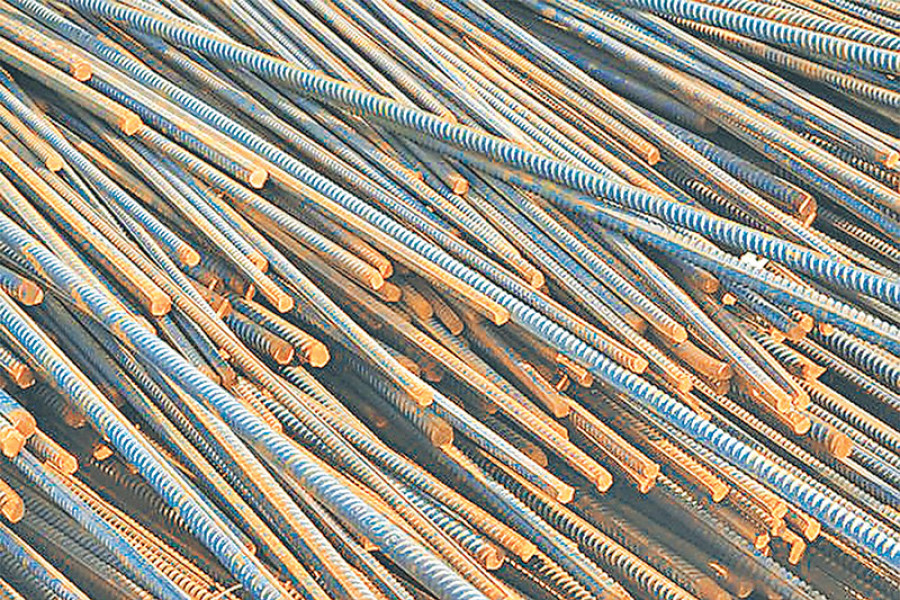Money
Raw materials imports up as construction rebounds
Imports through Bhairahawa customs point of raw materials needed to make cement and iron have swelled in recent days as post-earthquake reconstruction and construction of several national pride project have gathered pace.
Madhav Dhungana
Imports through Bhairahawa customs point of raw materials needed to make cement and iron have swelled in recent days as post-earthquake reconstruction and construction of several national pride project have gathered pace.
Likewise, burgeoning urbanisation in several cities across the country has led to increasing consumption of construction materials, pushing up imports of raw materials.
According to the Bhairahawa Customs Office, 933.7 million kg of clinker worth Rs3.36 billion was imported in the first nine months of the fiscal year. Shipments totalled 227.6 kg worth Rs1.48 billion during the same period of the previous fiscal year.
Likewise, imports of raw materials required for iron production have seen a massive upsurge. In the first nine months of the fiscal, billets worth Rs17.73 billion were imported, up from Rs9.83 billion before.
The government has earned Rs810.7 million in import duty and taxes from clinker imports in the first nine months of the current fiscal, while earnings from the import of billets stand at Rs3.13 billion.
Meanwhile, auto imports through Bhairahawa Customs witnessed a sharp plunge after financial institutions tightened credit.
Despite the drop in imports through Bhairahawa Customs, imports of vehicles and spare part imports jumped 59.7 percent in the first nine months of the current fiscal year, as demand for heavy-duty vehicles and passenger cars surged following normalisation in the supply situation after the end of the Indian blockade, the Trade and Exports Promotion Centre (TEPC) said.
The country’s vehicle and spare parts import bill soared to Rs63.29 billion during the period from mid-July to mid-April, up from Rs39.64 billion recorded in the same period a year ago, according to the TEPC.
Following the surge in imports, the central bank instructed banks and financial institutions not to lend to unproductive sectors such as automobiles.
In the third week of February, the central bank barred banking institutions from extending more than 50 percent of the value of the vehicle as credit to auto loan seekers.
This directive meant that those looking for auto loans must pay at least 50 percent of the vehicle’s value up front at the time of purchase. Kathmandu-based automobile dealers have reported a fall in sales by around 50 percent.
“Despite a sharp drop in automobile imports, there’s positive growth in revenue collection due to the increase in imports of construction raw materials,” Bhupal Raj Shakya, chief of the Bhairahawa Customs Office, told the Post, adding that revenue collection was likely to exceed the target by Rs4-5 billion if the pace continues.
While Bhairahawa Customs had been initially given a target of Rs52 billion, the figure was revised to Rs57billion after assessing the situation of the first six months. The revenue target for the last fiscal year stood at Rs52billion.
Ram Kumar Sharma, president of the Siddhartha Chamber of Commerce, said that industrial development in the region grew due to minimal impact of the political movement in the Tarai and a relatively better performance during the Indian economic blockade, leading to a rise in imports of major items this fiscal year.




 7.12°C Kathmandu
7.12°C Kathmandu













%20(1).jpg&w=300&height=200)
